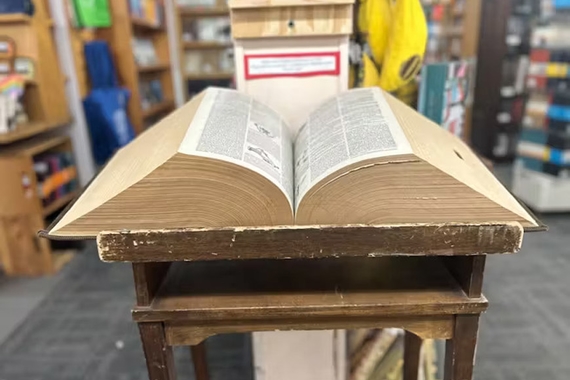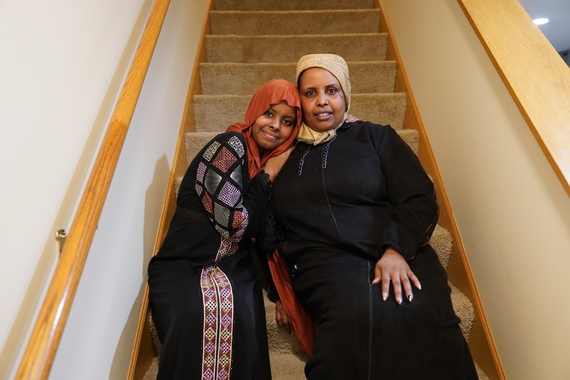In Memoriam: Heidrun Suhr
Photo: Heidrun Suhr on campus in 2019
Written by Rick McCormick (in consultation with Linda Schulte-Sasse, Ruth-Ellen Joeres, Sabine Engel, and Cathy Parlin)
Heidrun Suhr was the very first DAAD Visiting Professor to come to the US and she was sent to the University of Minnesota, where she was a colleague in our department from 1984 to 1989, but she remained an ally of the German program here and of Women in German. She was a dear friend to many of us. Heidrun passed away in Berlin on October 2, 2020, at the age of 69; she died of cancer, which had been diagnosed late last year, but this was after having bravely lived with MS since the mid-1990s, continuing to travel the world as she loved to do almost until the end of her life.
Heidrun was born in Oldenburg, (West) Germany. She studied Anglistik, Germanistik, and political science in Marburg, earning her doctorate with a dissertation on English women novelists of the 18th century. While in our department, she taught our students, served on committees, organized conferences, and conducted her own research. In 1987, working together with art historian Mark Haxthausen, she planned an international conference at the University of Minnesota to mark the 750th anniversary of Berlin, inviting scholars from both German states. In 1988 she was instrumental in planning the Women in German conference, which for the first time took place in Minnesota that fall. In 1989, Heidrun published one of the first articles in English on Turkish German authors in New German Critique. It is still being cited.
After leaving Minnesota Heidrun briefly served as a DAAD Visiting Professor at the University of Montreal and then took a job at the DAAD New York Office, where she soon became the Director—the first woman to hold that position. While with the DAAD in New York she supported German studies in the US; she helped our department finance the Minnesota Forum on German Culture, a conference series initiated by our colleague Jack Zipes. Heidrun was also responsible for ensuring that Women in German conferences got funding from the DAAD, which continued for many years.
While with the DAAD in New York, she also taught at New York University, and eventually she became the director of NYU’s Deutsches Haus. But soon after she took that position, she was diagnosed with MS. She decided to return to Germany in the late 1990s, where she worked for a few more years for the DAAD in Bonn, and then she retired to Berlin. For many years her traveling had been part of her job with the DAAD, visiting universities and conferences all over the world, but after retirement, she continued her travels. Indeed, she was at a health spa on a beach in Sri Lanka in December 2004 when the tsunami devastated that coast; thanks to the help of a brave cook at the resort, Heidrun survived.
From 2008 on, she was instrumental in helping the Center for German and European Studies (CGES) at the University of Minnesota, then directed by Sabine Engel, establish a number of exchange programs between Minnesota and Berlin, not only for students but also for teachers, as well as for health policy and energy policy leaders. Heidrun’s apartment on the Chauseestrasse (right across from the Brecht-Haus) became a salon for these visitors. She arranged tours for them, sometimes leading them herself, driving on the scooter she used to get around Berlin. (MS made it difficult for her to walk.)
She also taught German to refugees in Berlin. Among those she tutored was Hayatullah, a young man from Afghanistan. Heidrun became a special advocate and friend to him, and he has thrived professionally with her help. The last time she visited Minnesota was in May 2019, when (ever the international traveler) she came to Minnesota in May to help us celebrate Ruth-Ellen Joeres’ 80th birthday; indeed, it was her idea to hold the party
After her diagnosis with cancer in December 2019, she made a lot of brave decisions, always facing the facts rationally, planning as efficiently and thoroughly as she had done all her life: first to stop chemo treatments after they became too onerous, when to go on pain medications, and when to go into hospice. She always kept in touch with friends by email and WhatsApp until she couldn’t write anymore. Impressive till the very end, Heidrun was an amazing human being, full of energy and ideas, an enthusiastic traveler, a very knowledgeable lover of art and culture, politically engaged, a talented powerhouse who had facilitated with great insight and intelligence so many important initiatives in German studies. As Sabine Engel writes, “She was a trailblazer: first DAAD visiting professor in the USA; first woman director of the DAAD New York Office; and in her many years of struggle with MS, she demonstrated a joy in life and a degree of courage and persistence that inspires awe.”
Heidrun was a warm, considerate, and generous friend to so many. We were lucky to know her, and we will miss her. There will be a small family ceremony (owing to COVID) in Oldenburg, where she will be buried. Her friends in Berlin are trying to organize a ceremony there, too. If and when we learn of an obituary in Germany and/or about a memorial fund, we will make that known.



